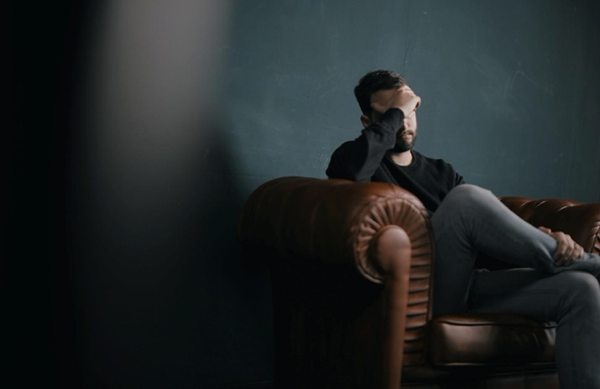What is Cognitive Behavioral Therapy and can CBT exercises help with sound disorders? Oftentimes, you may feel trapped in your negative thoughts, which leads to destructive behaviors and mental conditions untreatable by over-the-counter medicine. The enticingly perceptive nature of the brain interferes with mental hearing disorders and many other such conditions.
In these instances, CBT or cognitive behavioral therapy is the best solution. Unlike other therapies, it is the psychoanalysis of your brain and consciousness. It helps you uncover some of the underlying truths about yourself.
What exactly is CBT (Cognitive Behavioral Therapy)?
You can partake in several different types of CBT since it has applications in different kinds of conditions. However, the goal of this therapy ultimately stays the same. It encourages people to differentiate between reality and their subconscious interpretation of it so that they can feel better.
It studies your feelings, your thoughts, or in other words, cognition, and behaviors. The therapist’s job is to look at how the feelings, cognition, and behaviors intercede with each other and interact to produce the resulting behavior.
Our feelings strongly influence our thoughts, behaviors and can also alleviate or amplify a certain sensation if you do not stabilize them. Similarly, our thoughts also play a key role in our behavior towards certain stimuli.
Cognitive Behavior therapy tries to unveil the shadowing voices inside your mind that hinder your decision-making and lead to destructive behavior. It is an evidence-based therapy, which means that there is proof for its effectiveness.
It emphasizes how simply changing a thought process can help you overcome the challenges in your life. These improvements can stem from deep physiological changes in your body. You will find many different techniques that fall under the umbrella of CBT.
Cognitive Behavioral Therapy CBT Exercises
The primary and most dominant way to participate in CBT is interactive sessions with a trained practitioner. However, other techniques do not involve a psychoanalyst. You can perform them yourself without the help of others.
Cognitive Restructuring
This technique involves the help of the therapist to observe you while you take them down on the stroll of all your negative emotions and thoughts. In other words, it is the dissection of your thoughts, not just by the therapist but also, more importantly, by yourself.
In this technique, the main aim of the therapist is to make you realize the destructive outcomes that are manifesting from your negative thought pattern. They try to make you better identify your negative emotions before they emerge and take over your mental wellbeing.
Exposure Therapy
This CBT technique works best for people that suffer from cognitive hearing disorders such as tinnitus or phobias and fears. The idea of exposure therapy is to desensitize you from situations that cause a drastic response from your side.
This technique is arguably the most provocative than the rest; however, the therapist sets the limit of exposure, starting small and gradually increasing the intensity for the best results. Tinnitus patients can expose themselves to triggering sounds every day for a couple of weeks for treatment.
Journaling
Journaling also refers to recording your everyday thoughts and feelings in writing. This technique may or may not involve a therapist. Writing down your emotions and thoughts is a therapeutic retreat and helps gives you a perspective on your thoughts and feelings.
Moreover, it makes you identify the subtle environmental nuances that may be triggering a mental response.
Guided Discovery
In this CBT exercise, the therapist has the biggest responsibility. They have the job of unraveling the deepest thoughts that linger at the back of your mind. They put themselves in your place and try to resonate with the subconscious workings of your brain.
It involves a series of questioning and reasoning to uncover different perceptions of your problems and resolve some of the root causes. A guided discovery can ultimately be pivotal in helping you make better life choices and escape the behavioral patterns that lead to your demise.
Conditions that CBT can help with
CBT is an emphatically effective therapy, whether in conjunction with other therapies and medication or alone. It has proven to help with chronic illnesses, disorders, and mental conditions. These include:
- Anxiety
- Depression
- Hearing disorders
- Chronic Pain
- Addictions
- OCD
- Phobias
- Sleep Disorders
- Tinnitus
- Eating disorder
- PTSD
- Sexual Disorders
CBT is one of the few therapies in which you, as an individual, have to take the initiative. It can be uncomfortable at the start because exposing your deepest and darkest secrets does not come easy. Similarly, exposure therapy may result in an intuitive and unwanted response. However, with the right practitioner, the risks can reduce greatly.
Cognitive Behavioral Therapy CBT Exercises: To Conclude
Tinnitus is an unusual and unwavering perception of sound without the presence of an existing sound. It is one of the few hearing disorders that CBT helps improve.
If you or your loved one suffers from this dreaded condition, schedule an online session with Stephen Katz at the Tinnitus Cognitive Center™ in New York. Call us now for a consultation at 646-213-2321.



[…] the type and nature of the issue you are dealing with. For instance, in the treatment of tinnitus, CBT is an umbrella term for many cognitive therapies that help to rethink tinnitus sounds as neutral signals and sounds. Hence, the affected person with […]
[…] Behavioral Therapy (CBT): CBT can help you change your thought patterns and reactions to tinnitus, reducing stress and anxiety […]